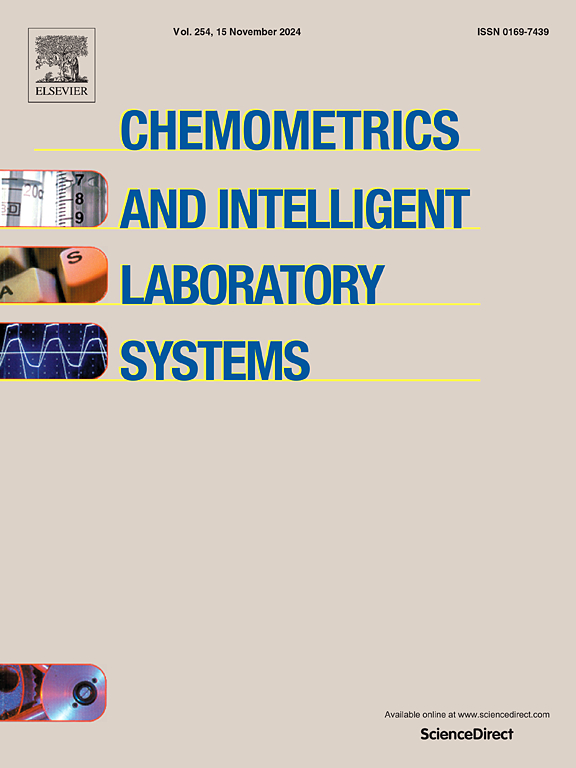基于异构属性图的药物-药物相互作用事件预测框架
IF 3.8
2区 化学
Q2 AUTOMATION & CONTROL SYSTEMS
Chemometrics and Intelligent Laboratory Systems
Pub Date : 2025-06-06
DOI:10.1016/j.chemolab.2025.105440
引用次数: 0
摘要
多种药物联合使用有助于减轻患者耐药性,提高治疗效果。然而,这种治疗策略也可能导致不良副作用,这可能会危及患者的安全。因此,识别潜在的药物-药物相互作用(ddi)并研究其潜在机制具有重要意义。现有方法主要预测药物对是否相互作用或药物-药物相互作用事件(DDIEs)是否发生,而很少有研究旨在揭示DDIEs的具体风险水平,这对制定临床用药策略和个性化治疗至关重要。在此基础上,我们提出了一种将相互引导的共同关注机制与异构属性图学习相结合的DDIE风险等级预测方法MCAHG-DDI。具体而言,我们将异构属性图与药物的SMILES序列相结合,利用相互引导的共同注意机制提取药物的初始特征,随后将其输入异构图卷积网络和异构边缘卷积网络进行高级学习。最后,我们设计了一个门控融合机制来获得药物的最终嵌入表征。实验结果表明,MCAHG-DDI在二值和多类分类任务中都优于基线模型。消融研究和实例分析进一步验证了该模型的优越性。本文章由计算机程序翻译,如有差异,请以英文原文为准。
A mutual-guided co-attention mechanism and heterogeneous attribute graph-based framework for drug-drug interaction event prediction
The combined use of multiple drugs helps alleviate patient resistance and enhances therapeutic efficacy. Nevertheless, this treatment strategy can also result in adverse side effects, which may compromise patient safety. Therefore, identifying potential drug-drug interactions (DDIs) and investigating their underlying mechanisms are of great significance. Existing methods predominantly predict whether drug pairs interact or whether drug-drug interaction events (DDIEs) occur, while few studies aim to reveal the specific risk levels of DDIEs, which are crucial for developing clinical medication strategies and personalized therapies. Based on this, we propose a DDIE risk level prediction method, named MCAHG-DDI, which integrates a mutual-guided co-attention mechanism with heterogeneous attribute graph learning. Specifically, we integrate the heterogeneous attribute graph with the SMILES sequences of drugs, leveraging a mutual-guided co-attention mechanism to extract the initial features of the drugs, which are subsequently input into a heterogeneous graph convolution network and a heterogeneous edge convolution network for advanced learning. Finally, we design a gated fusion mechanism to obtain the final embedding representations of the drugs. Experimental results demonstrate that MCAHG-DDI outperforms the baseline models in both binary and multi-class classification tasks. Ablation studies and case analyses further validate the superiority of the proposed model.
求助全文
通过发布文献求助,成功后即可免费获取论文全文。
去求助
来源期刊
CiteScore
7.50
自引率
7.70%
发文量
169
审稿时长
3.4 months
期刊介绍:
Chemometrics and Intelligent Laboratory Systems publishes original research papers, short communications, reviews, tutorials and Original Software Publications reporting on development of novel statistical, mathematical, or computer techniques in Chemistry and related disciplines.
Chemometrics is the chemical discipline that uses mathematical and statistical methods to design or select optimal procedures and experiments, and to provide maximum chemical information by analysing chemical data.
The journal deals with the following topics:
1) Development of new statistical, mathematical and chemometrical methods for Chemistry and related fields (Environmental Chemistry, Biochemistry, Toxicology, System Biology, -Omics, etc.)
2) Novel applications of chemometrics to all branches of Chemistry and related fields (typical domains of interest are: process data analysis, experimental design, data mining, signal processing, supervised modelling, decision making, robust statistics, mixture analysis, multivariate calibration etc.) Routine applications of established chemometrical techniques will not be considered.
3) Development of new software that provides novel tools or truly advances the use of chemometrical methods.
4) Well characterized data sets to test performance for the new methods and software.
The journal complies with International Committee of Medical Journal Editors'' Uniform requirements for manuscripts.

 求助内容:
求助内容: 应助结果提醒方式:
应助结果提醒方式:


